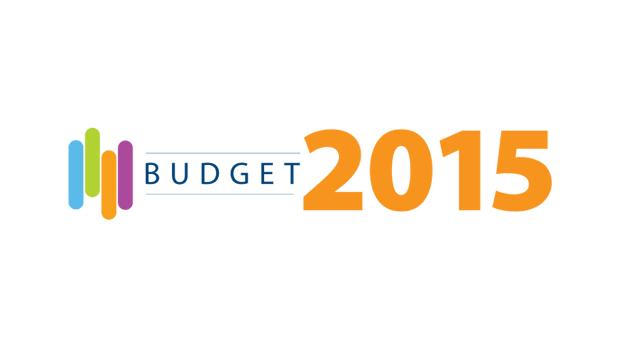The? 2015 budget scores very high on nearly all parameters. It sets the economy on a higher and sustainable growth path, desists from populism, and aims to improve business conditions, improve government?s functioning and improve delivery of services to citizens while maintaining fiscal discipline. This is a good step in terms of making the Indian economy’s foundation deep and stronger.
The budget reinforces global view of improving economic conditions in India. The leading equity analysts in India like HDFC and others maintain a positive outlook of equity and fixed income markets. While the fiscal deficit number is a shade higher than market expectations, the quality of the deficit is very good. Further, the view that inflation has a greater bearing on interest rates than small changes in fiscal deficit, It seems that the interest rates would continue to move lower in the medium term. Improving growth prospects of the economy, especially of the capex cycle, improving margin outlook of corporates, likely lower interest rates and reasonable valuations lead to a positive outlook for the economy over the medium to long term. The impact on different sectors is detailed below.
Capital Markets
- Introduction of composite cap for foreign investment- Distinction between FDI and FPI removed.
- Merger of FMC into SEBI- Single regulator for Equity, Commodity & Currency markets.
- Distribution tax – Increase in surcharge from 10% to 12% on Dividend distribution tax and buyback of shares, or by mutual funds and securitisation trusts on distribution of income.
- Sovereign Gold Bond- Instrument carrying fixed rate coupon and redemption value linked to gold price, as an alternative to physical gold. Could help structurally alleviate pressure on the Current Account.
- Real Estate Investment Trusts (REITs) – Rationalization of taxation for REITs and Infrastructure
Investments Trusts (InvITs), including pass-through status. - Boost to on-shore fund management ? Changes to tax norms to remove disincentives for locating
fund manager within India. Positive for development of asset management industry in India. - Public Debt Management Agency (PDMA)- Creation of independent agency to handle internal and
external debt markets. Would lead to deepening of the bond markets
Banking & Finance
- Formation of Bank Board Bureau (BBB) en-route to formation of Bank Investment Committee ? structural positive for governance on public sector banks
- Bankruptcy code- Comprehensive bankruptcy code will help in speedy resolution of stressed assets in banks.
- Applicability of SARFAESI Act to NBFCs- Will bring regulatory parity in matters of recovery for NBFCs in line with Banks.
- Setting up of Micro Units Development Refinance Agency (MUDRA) Bank- To facilitate easy access to formal banking channels for micro and small entrepreneurs and also aid socio-financial inclusion.
- Electronic Trade Receivables Discounting System (TReDS) for SME- This should improve the liquidity in the MSME sector significantly
Oil & gas
- Budget subsidy provision of Rs300bn implies flat realisation for upstream oil companies in FY16E as FY14 assuming no rollover of subsidies in FY16 and Brent at $60/bbl in FY16E.
Telecom
- Total receipts are flat for FY14, FY15RE and FY16. Hence, the budget implicitly assumes a similar sized auction in FY16 as well. This is neutral for the sector.
Media
- Service tax increase from 12.36% to 14% is marginally negative for broadcasters and DTH operators.
- The inclusion of amusement parks in the service tax ambit is a material negative till GST comes into force as parks would be paying both entertainment tax and service tax. Multiplexes continue to be exempt from service tax.
Pharma
- Additional investment allowance (@ 15%) and additional depreciation (@35%) to new manufacturing units set up during the period 01-04-2015 to 31-03-2020 in notified backward areas of Andhra Pradesh and Telangana (both states are Pharma manufacturing hubs)
- Full tax paying companies would benefit from lowering of corporate tax rate from 30% to 25% over 4 years. Low tax paying companies could get impacted from withdrawal of exemptions
Auto sector
- Marginal increase in excise duty rate from 12.36% to 12.5%
- Indirect positives are re-iteration of GST implementation timeline of April, 2016, significant increase in allocation towards road-building.
- The stress on infrastructure is positive for Commercial Vehicle sector.
Metals
- Effective rate of clean energy cess is being increased from Rs.100 per tonne to Rs.200 per tonne on all types of coal
- Potential impact of 2-3% on the landed cost of coal which is likely to increase cost for aluminium players
IT services / Software
- Expect companies paying Effective Tax Rate (ETR) above 25% to be benefited and those IT companies paying an ETR of less than 25% could have negative implications
Consumer
- Increase in service tax rate also to impact companies consuming services in a significant manner. E.g. all retailers paying rent. It also increases prices of services for consumers, which could impact demand. E.g. restaurants, QSRs, etc.
- Definition services expanded to include Job work in manufacture of alcoholic liquor. Negative for alcoholic beverages companies. Entry to amusement parks. Transportation of food stuff other than food grains
and agricultural produce. Negative for restaurants sector. - Requirement of PAN card for all transactions in cash above Rs 1 lac. Negative for Jewellery sector. Also plan to create Gold Monetization Scheme by replacing existing Gold Metal Loans could mean higher cost of working capital for jewelry sector.
- Excise duty on leather footwear selling above Rs 1000 reduced from 12% to 6%. Positive for footwear industry.
- Excise duty on cigarettes raised by 15%-25%. Negative for cigarette companies.
- Goods brought under excise duty @ 2% (without CENVAT) from being exempt earlier ? condensed milk & peanut butter. Negative for specific FMCG companies.
- Rate of tax on royalty and fees reduced from 25% to10%. Positive for MNC companies paying
royalty fees to parents.
With input from Goldman Sachs, HDFC and ICICI
